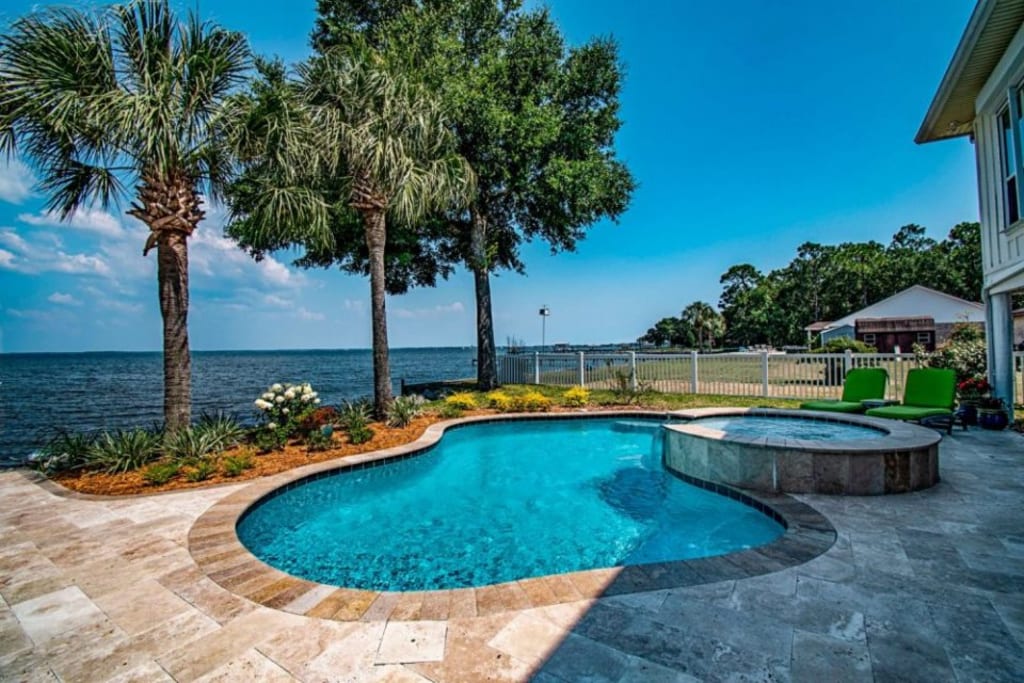Essential Strategies for Pool Maintenance
Leak-Finding 101

A well-maintained pool is a source of joy and relaxation. However, even the most meticulously cared-for pools can develop leaks over time. Detecting and addressing leaks promptly is crucial to prevent further damage and costly repairs. In this article, we will delve into the essential strategies for finding a leak in a gunite pool, equipping you with the knowledge and techniques to maintain the integrity of your aquatic sanctuary.
Observe Water Loss Patterns
The first step in leak detection is to monitor the water level of your gunite pool regularly. Keep track of any significant water loss by marking the water level on the pool's skimmer or tiles. Ideally, you should measure water loss over a 24 to 48-hour period when the pool is not in use. If you notice a consistent drop in water level that cannot be attributed to evaporation or splash-out, it is likely indicative of a leak.
Conduct a Visual Inspection
Performing a visual inspection is a crucial aspect of leak detection in gunite pools. Examine the pool's surface, tiles, fittings, and surrounding areas for any visible signs of damage or deterioration. Look for cracks, loose tiles, gaps, or damp areas near the pool structure. Check the pool's waterline for any irregularities, as leaks often occur in areas where the water level is constantly changing.
Utilize the Bucket Test
The bucket test is a simple yet effective method to determine if your gunite pool is experiencing excessive water loss. Place a bucket filled with water on the first or second step of the pool, ensuring it is immersed to the same water level as the pool. Mark the water level inside the bucket and on the pool's waterline. After 24 hours, compare the water loss in the bucket to the water loss in the pool. If the pool's water level drops significantly more than the bucket's level, it indicates a probable leak.
Dye Testing for Surface Leaks
Dye testing is a valuable technique for identifying surface leaks in gunite pools. Turn off the pool pump and add a few drops of food coloring or a leak detection dye near suspected leak areas, such as cracks, fittings, or skimmers. Observe if the dye is drawn into the leak, indicating its location. Dye testing can help narrow down the source of the leak and facilitate targeted repairs.
Investigate Equipment and Plumbing
Inspecting the pool's equipment and plumbing is crucial for leak detection. Examine the pump, filter, valves, and connections for any visible signs of leaks, such as water accumulation or damp areas. Check the plumbing lines for leaks or drips. Pay particular attention to areas where plumbing lines penetrate the pool shell, as these are common locations for leaks in gunite pools.
Conduct a Pressure Test
Pressure testing is a more advanced method that can help identify hidden leaks in the pool's plumbing system. By isolating different sections of the plumbing lines, you can apply pressure and monitor if it drops over time, indicating the presence of a leak. It is recommended to consult a pool professional or follow manufacturer guidelines for accurate pressure testing procedures.
Seek Assistance from a Professional
If you have exhausted your efforts or prefer professional assistance from the outset, don't hesitate to contact a pool specialist specializing in leak detection for gunite pools. These professionals possess the expertise and specialized equipment, such as electronic leak detectors and acoustic sensors, to accurately identify and locate leaks. Their experience and knowledge can save you time, money, and unnecessary frustration.
Regular Maintenance and Water Conservation
Prevention is key to avoiding leaks in gunite pools. Implement a regular maintenance routine, including checking and cleaning filters, monitoring water chemistry, and inspecting pool equipment. By keeping your pool in optimal condition, you can minimize the risk of leaks and prolong its lifespan. Additionally, practicing water conservation habits, such as fixing leaks promptly and avoiding excessive backwashing, can contribute to the overall health and sustainability of your pool.
Addressing Identified Leaks
Once you have successfully identified a leak in your gunite pool, it is vital to address it promptly. Depending on the severity and location of the leak, you may consider DIY repairs or enlist the services of a professional pool repair company. DIY repairs can involve patching small cracks with epoxy or using waterproof sealants on fittings. However, for significant leaks or structural damage, it is recommended to consult a professional to ensure proper and long-lasting repairs.
Conclusion
Finding a leak in a gunite pool requires a systematic and diligent approach. By implementing the strategies outlined in this article, including regular observation, visual inspection, bucket testing, dye testing, pressure testing, and seeking professional assistance when needed, you can effectively detect and address leaks in your pool. Remember, early leak detection and timely repairs are vital to prevent further damage, preserve the integrity of your gunite pool, and ensure uninterrupted enjoyment for years to come.





Comments
There are no comments for this story
Be the first to respond and start the conversation.